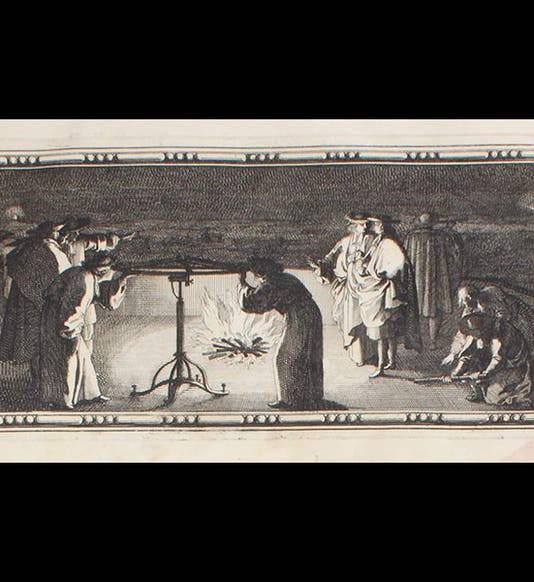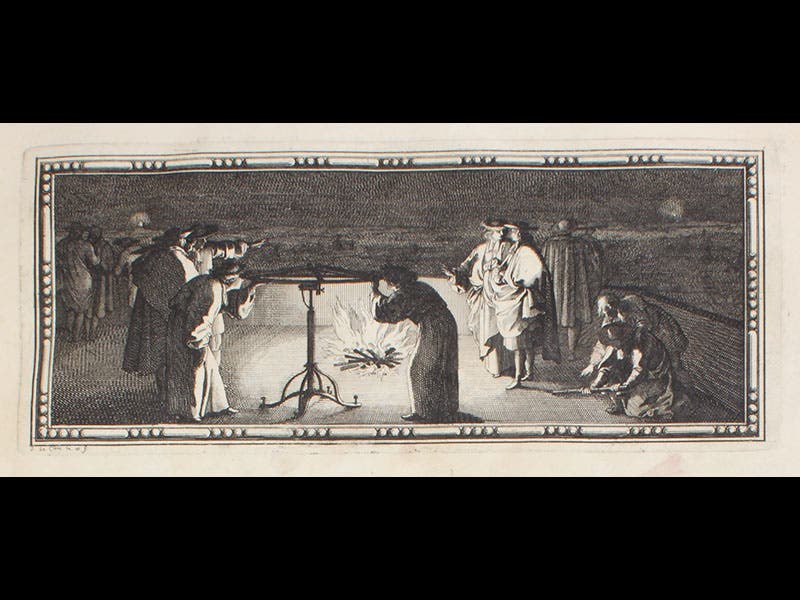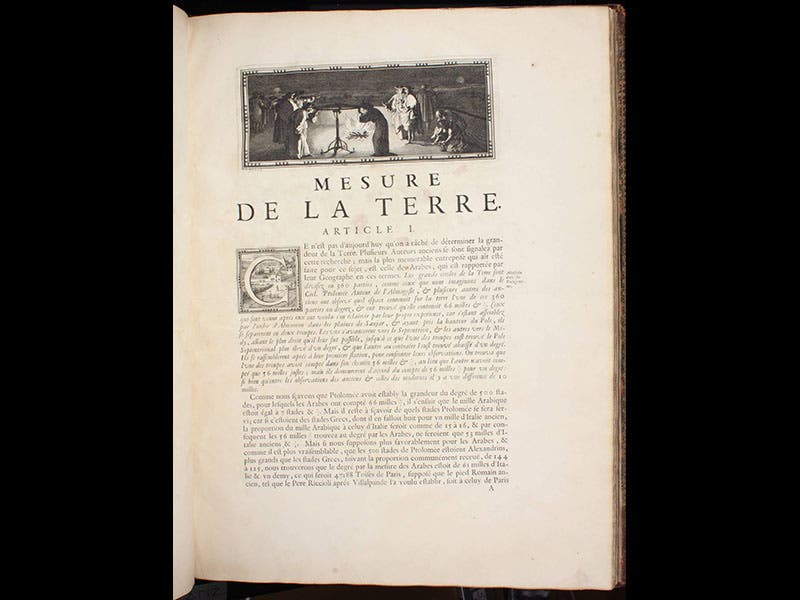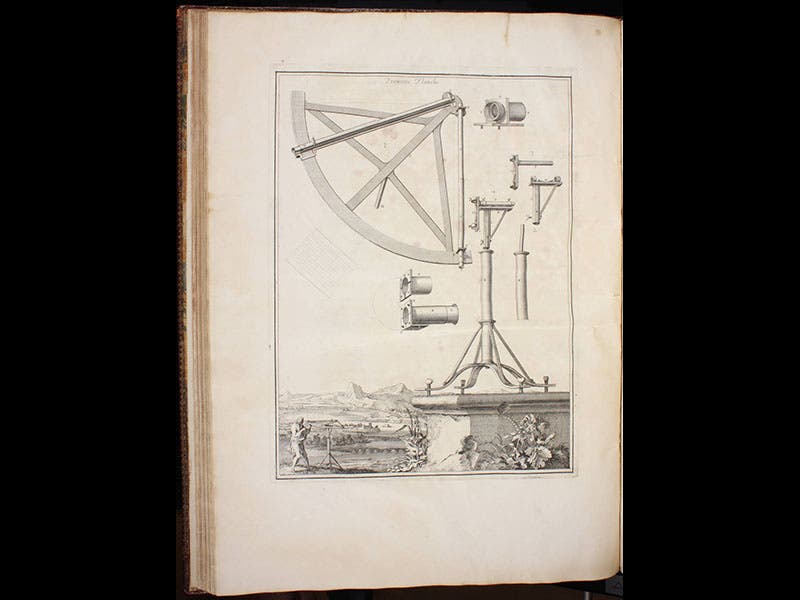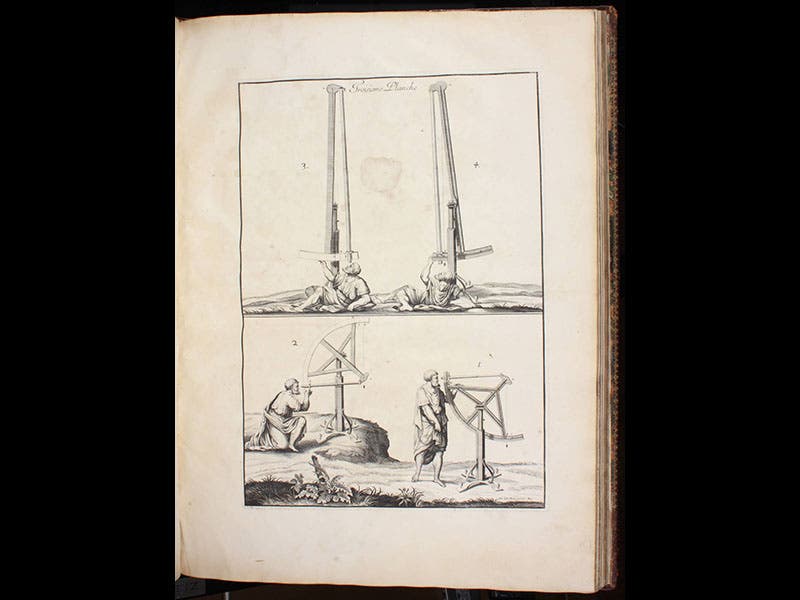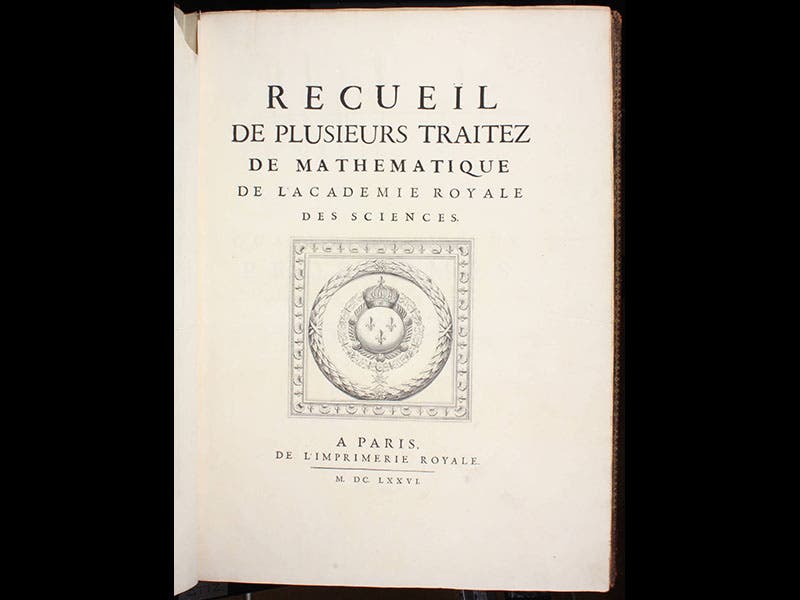Scientist of the Day - Jean Picard
Jean Picard, a French astronomer, was born July 21, 1620. In 1669-70, Picard successfully measured the length of a degree of latitude. He divided up eighty miles of open country north of Paris into 13 adjoining triangles. Picard carefully measured one side of one triangle with measuring rods, and then measured all the other sides by triangulating with precision quadrants and theodolites (see first four images; the first is a detail of the second). After he had thus measured the line of triangles, Picard set up a zenith telescope (one that looks straight up) at the two endpoints and sighted on a star (fifth image), and determined that the two endpoints were 1 degree and 12 minutes apart. He concluded, therefore, that for a separation of precisely one degree, the two points would be 69.07 miles apart, which is thus the length of one degree of latitude at the latitude of Paris. Assuming the earth were a perfect sphere and every degree were like every other, this would mean that the earth has a circumference through the poles of 24,865 miles.
Within the next eighty years, it would be discovered by a French expedition to Ecuador that a degree of latitude on the equator is shorter than one at Paris, and another French expedition would determine that both are shorter than one in Lapland. This means that the earth is not a sphere, but is shaped more like a grapefruit, being wider at the equator than through the poles.
Picard’s Mesure de la Terre (1671) was issued in 1676 as part of a collection of mathematical treatises (sixth image) and was one of the first publications of the recently-founded Paris Academy of Sciences; we have a copy in our History of Science Collection. It is the source for all the images above.
Dr. William B. Ashworth, Jr., Consultant for the History of Science, Linda Hall Library and Associate Professor, Department of History, University of Missouri-Kansas City. Comments or corrections are welcome; please direct to ashworthw@umkc.edu.

